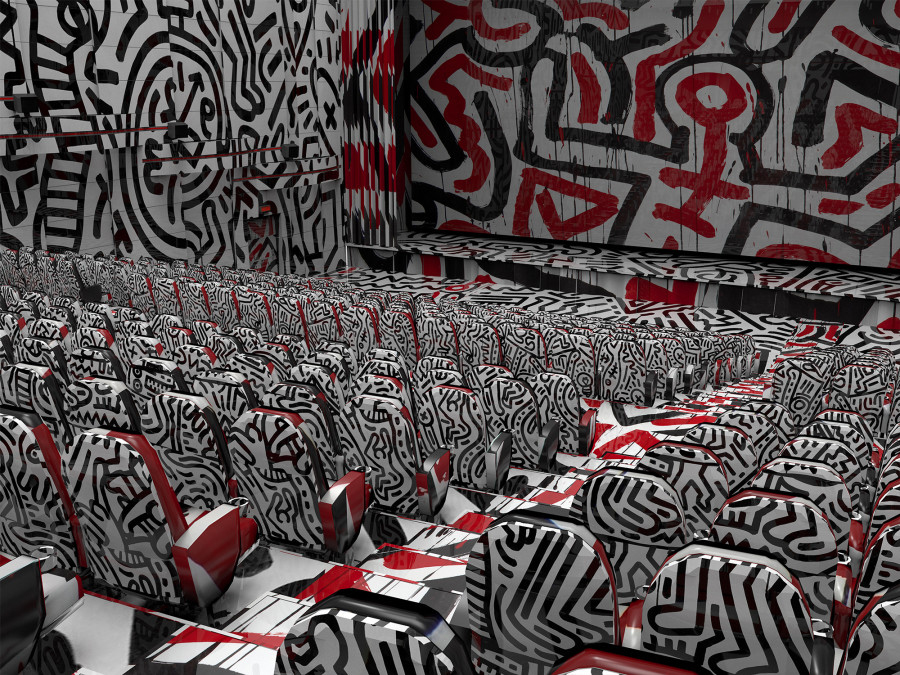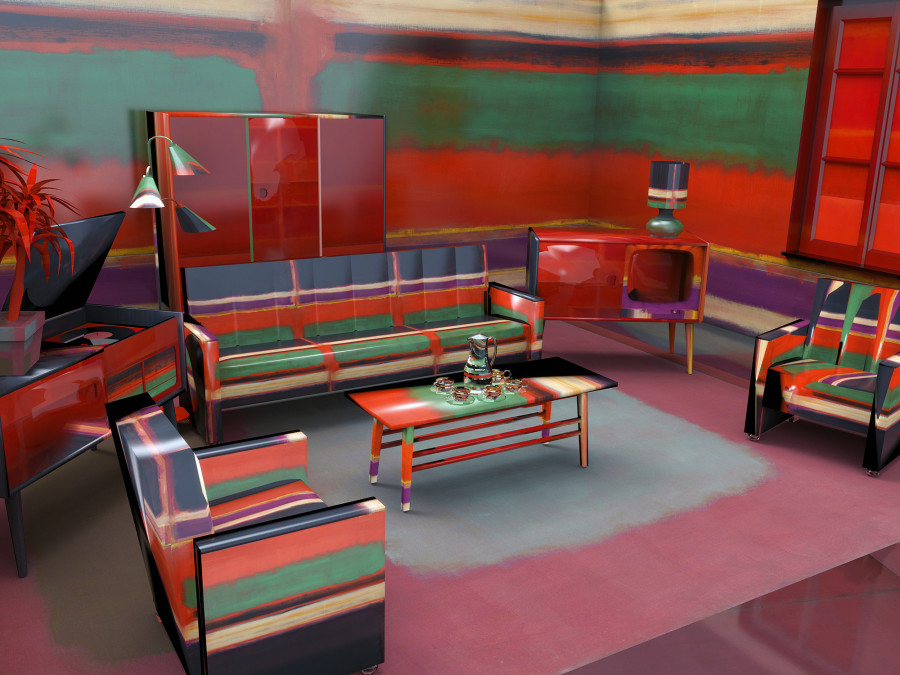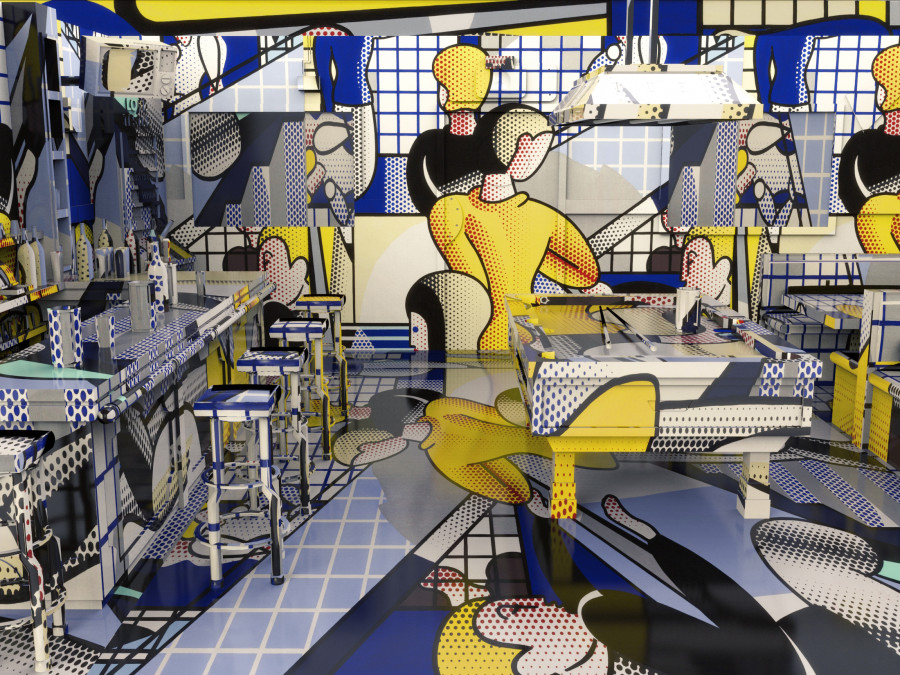
The series, “Brand New Paint Job” by Canadian artist Jon Rafmann, utilizes Google 3D Warehouse models as templates for his artist renderings of famous works. He, in essence, “wallpapers” these rooms with art exposing the idea of what if a canvas hadn’t been the artists’ preferred substrate, but interior design instead.

In an interview with the Huffington Post, Rafmann states, “On one level the painting becomes wallpaper, and on another these BNPJ rooms are like shrines to the artist.”

His works, archival pigment prints mounted on Dibond aluminum composite, utilize photo manipulation and digital art renderings to transform, for instance, Keith Haring’s Red (1982-1984) into the “Keith Haring Theatre.”
Essentially, the viewer is immersed in the artists’ work, as if it were possible to step inside the paintings themselves.
Dibond aluminum composite material has been a leader in the ACM market for over a decade due its durability and reliability in primarily the signage and display market. Additionally, the two pre-painted sheets of .012″ aluminum that make up the outer layers of the material allow Dibond to be the premiere choice for digital printing. As the flattest panel on the market, Dibond’s superior surface protects expensive digital and screenprinted graphics, allowing the material to be an ideal printing and mounting substrate for artists’ prints.

